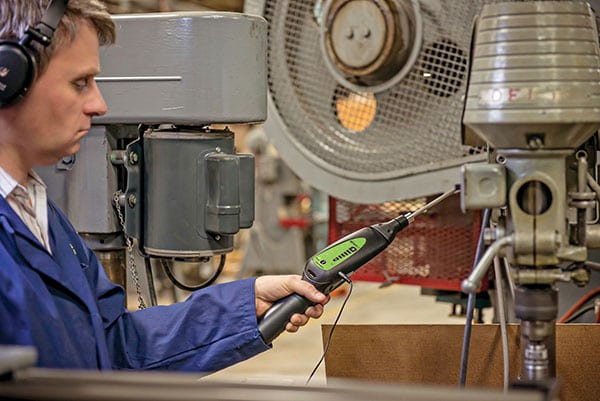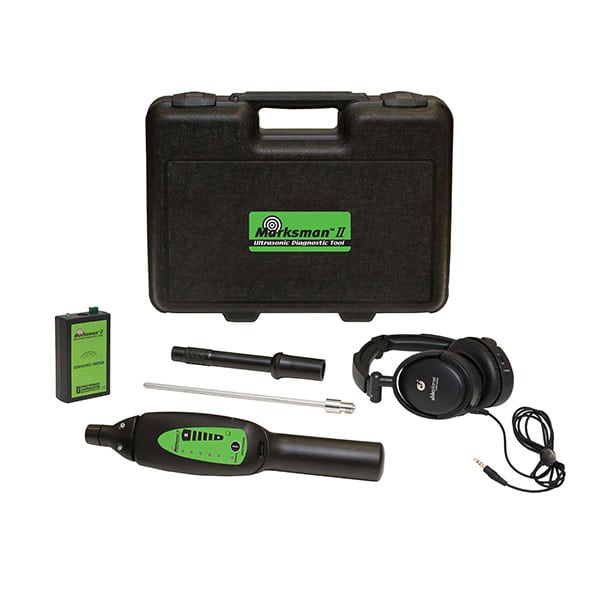Ultrasonic Diagnostic Tool Detects Leaks, Bearing Wear, and Corona Discharge
Air leaks cost money. According to the U.S. Department of Energy (DOE), over $5 billion per year is spent on energy to power compressed air systems. The DOE estimates that optimizing these systems could improve energy efficiency 20% to 50%, and part of optimization includes finding and fixing leaks. In addition to costing money, natural gas and propane leaks can be dangerous, so finding and fixing those are even more important.
Noise is always generated when pressurized systems leak. The problem is that when the leaks are small, the noise may not be audible to humans. However, ultrasonic diagnostic tools, such as the Spectroline MDE-2000NC Marksman II (Figure 2), can detect low-level noise from even the smallest leaks. Thus, with a receiver and a little training, technicians can find and fix nearly any leak.
Finding Leaks
Finding leaks with the Marksman II is fairly easy. You simply turn the receiver on, adjust the volume on the touch control pad, and scan all suspected leak areas. An audible alarm intensifies and a series of LED indicators illuminate on the receiver as you get closer to the leak.
Noisy environments can make finding leaks more difficult, but the Marksman II includes a hollow air probe and noise-canceling headphones to solve that problem. The air probe reduces the sensing angle, limiting the amount of ambient noise that gets into the receiver. The headphones muffle the ambient noise and also cut off the audible alarm, initiating the unit’s advanced heterodyne and sound signature technologies. When leaks are detected in this state, a natural sound similar to what you would expect to hear from a leak is produced.
The tool can also be used to find nonpressurized leaks, such as leaks that pass around faulty seals, gaskets, weather stripping, doors, windows, ductwork, and other enclosures. To check these types of components, a technician would place the ultrasonic emitter that comes with the kit inside the enclosure. The emitter produces ultrasonic beeps that are tuned to the frequency of the receiver. By scanning component seal areas, the beeping signal will lead to the exact spot where the leakage is occurring.
Bearing Wear and Electrical Problems
Ultrasonic tools can do more than just find leaks. The Marksman II can quickly pinpoint premature component wear using the contact probe that comes with the kit. With the tip of the installed contact probe touching a motor casing (Figure 3), for example, technicians can listen for abnormal or nonrhythmic clicks or grinding sounds. An irregular noise indicates early-stage bearing wear or potential gear trouble long before actual equipment failure.
 |
|
3. Hearing is believing. The contact probe allows faulty bearings or gears to be identified. Courtesy: Spectroline |
Ultrasonic tools are especially adept at picking up the noise associated with poor electrical connections that produce corona discharge. To identify electrical problems in breaker boxes, fuse panels, or other electrical enclosures, a technician would hold the probe several inches away, scan around the entire panel, and listen for a snapping or “frying bacon” sound. The noise indicates that corona discharge is an issue in the panel and should be more thoroughly investigated and fixed. ■
—Aaron Larson is a POWER associate editor.
